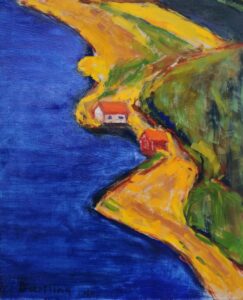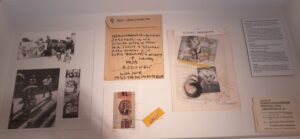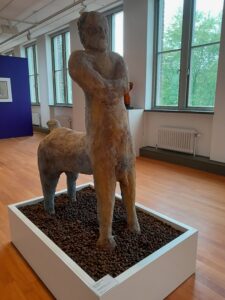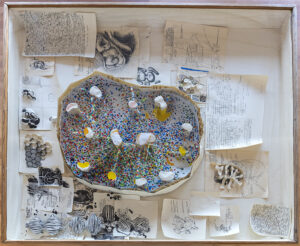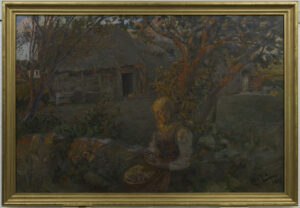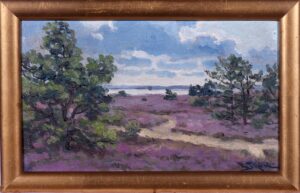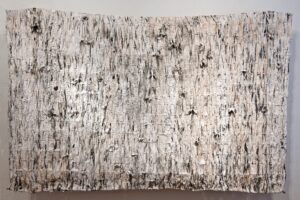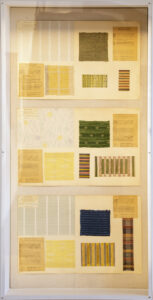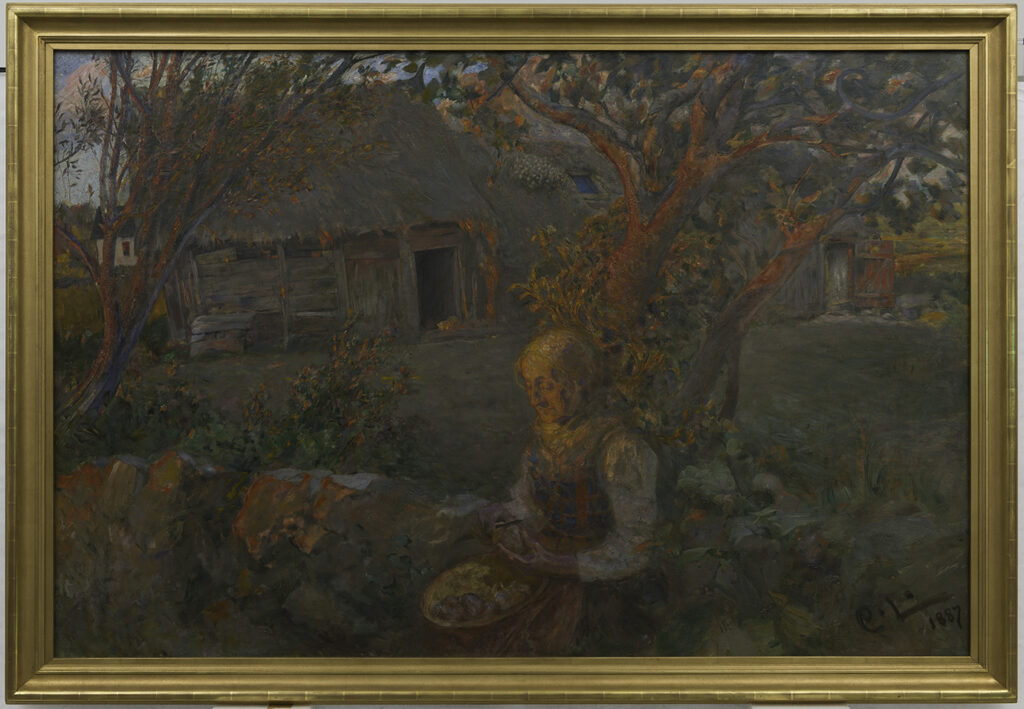Halland – Carl Larsson and Sigrid Holmwood
The theme of this room is the artist´s eye on the landscape Halland. Many of the artists come from here, whereas others have been for shorter or longer visits, once or several times. In the summer of 1887 Carl Larsson and his wife Karin came to Varberg, where they rented a cottage by Subbe lighthouse near Apelviken. The place is also connected to the Larsson couple´s friends in the oppositional artist´s association; Nils Kreuger, Karl Nordström and Richard Berg. The three artists made Apelviken theirs and were by prince Eugen given the name ”Ecole de Varberg”, the Varberg School. The two first are also represented in this exhibition.
The painting ”The last sun streaks” was executed by Carl Larsson in Varberg. It is not typical for him, even though we recognise the touch of national romance and the peasantry style. A woman in folklore clothing sits by a stone fenced yard, behind her an old ridge cabin, also known as a Halland cottage. The cottage that the Larssons rented is long gone, but at the spot there is still a stone fence.
The brush strokes in the painting are visible and the colours quite dark with heavy red/orange hues. The last sun streaks of the day reaches some of the stones in the fence and give them a fire red tint, that also colours the profile of the sitting woman. She peels potatoes, while the sun is about to disappear and the night is about to take over. Everything is still and gives a sense of calm summer days. Maybe welcomed breaks from teaching at Valand, the Art Academy in Gothenburg, where Carl Larsson worked when he made this painting.
By its side hangs a painting by Swedish-British Sigrid Holmwood. It also shows a rurally dressed woman with a waistcoat and an apron. She holds a long stick with a brush in one end. Behind her is a wooden fence. The colours in the painting are few, but bright. Yellow, red and blue dominate. The sky is built up by yellow brush strokes in rounded formations which gives a sense of heat. Two bright red dots on each cheek makes the woman remind a little of an Easter witch and the long stick can then be translated as a broomstick. She carries a big heap of sticks on her back and her face is somewhat clenched.
Sigrid Holmwood came through Art in Halland on a residency to Halmstad in 2012. She was inspired by Halland Art Museum´s large collection of peasantry paintings from the 18th and 19th century, but also of the environment around the open air museum Hallandsgården and of the witch processes in the 17th century.
She made the colours for the painting herself, similar pigments as the peasantry painters used. She also made her own pigments from plants and mushrooms, and created her own brushes. She dressed up as her persona ”the Peasant Painter” with bright red cheeks and folklore clothing. It is this persona we meet in the painting, a personal interpretation of the past. But perhaps also a comment on vulnerability through the reference to witches, and on sustainability by limiting the colours scheme to natural pigments.
